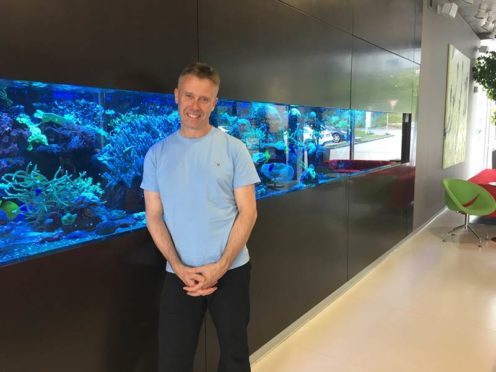An Aberdeen father has called for the introduction of routine cancer screenings in the UK after flying to the Czech Republic for pioneering treatment.
Shell engineer Jon Briggs, 50, started monitoring his PSA score – which measures the level of toxins in the prostate – after his friend was told he had terminal cancer.
Despite having no symptoms, Mr Briggs found that he also had the disease, but had caught it at an early enough stage to undergo treatment.
He said: “I only started monitoring my PSA because my friend found himself in such a horrible situation.
“I was lucky enough to catch it very early.
“If my friend had had the same testing there’s no reason to believe his couldn’t have been caught early, too.”
After visiting a number of specialists he was given two options – surgery to remove the whole prostate or brachytherapy which involves the use of radiation.
The latter would have required him to wear a lead apron for six months when close to children – including his two-year-old daughter.
He instead opted for proton beam therapy, requiring him to travel 800 miles to Prague as it is not currently available in the UK.
A type of radiotherapy, it uses a beam to pinpoint the tumour while avoiding damage to the healthy tissue surrounding it.
Mr Briggs said: “You get strapped into position and the only discomfort is that you have to have a full bladder while they are carrying out the treatment, which is for about 20 minutes.
“But when you look at the bigger picture it’s nothing.
“There’s a slight sound but there’s no movement. It’s super quick and it’s super easy.”
Mr Briggs is now calling for a routine screening programme for prostate cancer to be introduced.
Recent figures show it is now the third largest cancer killer in the UK, behind lung and bowel.
Last year it accounted for 11,819 deaths.
“I had a PSA test just before the treatment and it was 7.2,” Mr Briggs added.
“Four months later it had dropped to 4.2.
“I just had another one a few days ago and it had gone down to 2.3.
“The general consensus is around 20% of people will have a rising PSA and no cancer, and those people might have to go through unnecessary biopsies and tests.
“But what about the other 80%? Many of whom will have absolutely no symptoms.
“I was incredibly lucky but there are others – such as my friend – who aren’t.”










